If you anticipate that the elements may strain your roof, an underlayment is crucial. It would be best to have an underlayment you can rely on whether you have a lot of rain, snow, or extreme heat.
Felt is outdated, and rubber synthetics are more expensive to install since they take longer. However, synthetic brands are ideal if you want to complete your installation quickly without losing quality.
To save you time, we spent hours finding the best roof underlayment for asphalt shingles. We've provided you with a list of our top picks. Continue reading to find the best option for you.
What is Roof Underlayment?
Roofing underlayment which is a light, water proof layer is installed between the roof shingles and the roof deck to prevent leaks. It is applied in new building construction, for roofing and wall cladding, re-roofing and for maintenance purposes.
Here are 5 things to consider when upgrading your old roof.
Choosing the right underlayment for roof shingles is crucial especially when doing a re-roofing of an existing building, or construction of a new one. In choosing the right underlayment for roof shingles there are several choices that people can make.

Image Credits: Roof Giant
1. Asphalt-saturated Felt
It was formerly used for roof underlayment until synthetic form replaced it. Known also as tar paper or felt paper, it can be manufactured using various asphalt, polyester, cellulose or bitumen varieties.

Image Credits: YouTube
2. Rubberized Asphalt
This option for roof underlayment is usually the most costly, owing to the presence of more rubber polymers accompanied by asphalt. The combination of these generates an entirely water proof seal but it is very costly.

Image Credits: Havelock Metal
3. Synthetic Underlayment
The construction building material sector continued advancing further as synthetic underlayment was adopted as the principal underlayment material used today. The base mat is soaked in asphalt and then reinforced with a fiberglass to add further rigidity to the product. It is also exceptionally water repellent, much stronger, and more resistant to tearing.
The Best Roof Underlayment for Asphalt Shingles
1. SIPA Synthetic Roof Underlayment 48" x 250'
- 10 square roll covers 1,000 square feet, 100GSM
- Performance characteristics exceed - ASTM D4869, ASTM D226, TDI...
- Ultraviolet Exposure for 60 days.
- Ideal for for sloped Commercial and residential roofs and roofing...
- Won’t buckle, warp, or crack , Water resistant
We recommend SIPA because since it is a synthetic roofing underlayment that is lightweight that helps in increasing the roof system’s life due to better water resistance and protection from UV rays. Moreover, this 100 GSM has better traction because of the new non-woven top surface fabric.
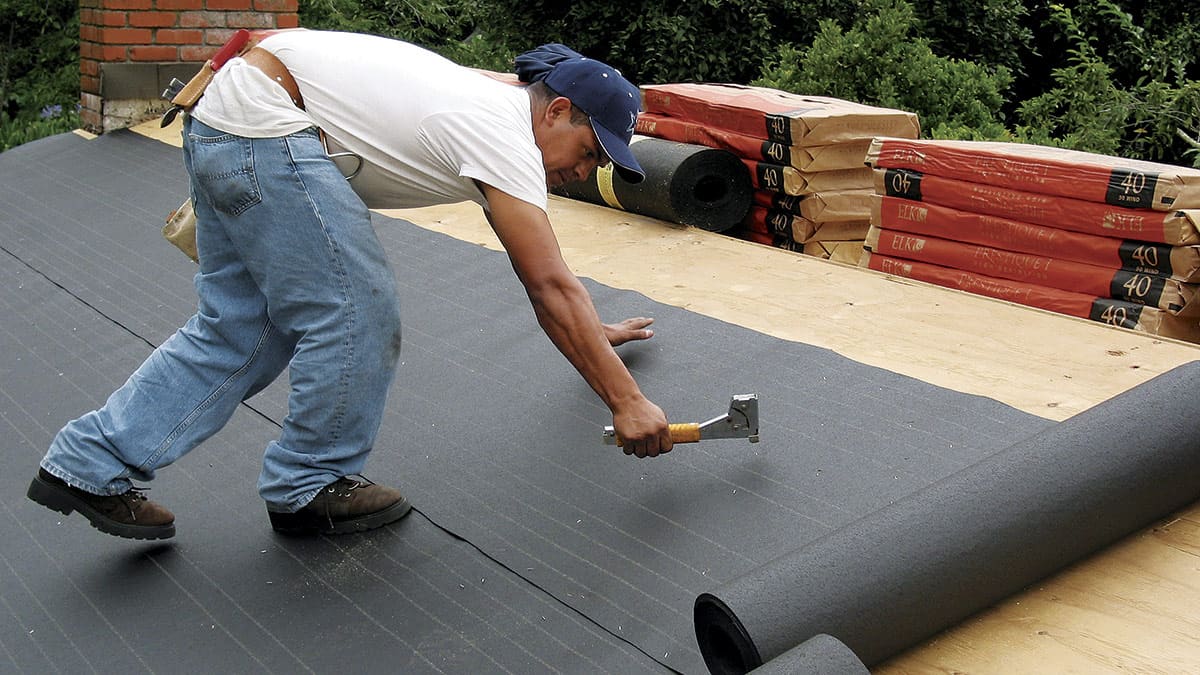
Image Credits: Fine Home Building
It has a coil layer that is water proof, anti-aging, and complies to both ASTM D4869 and ASTM D226. It is also firm and reliable with no warped edge and empty drum.
2. Grace Select 36 in. x 195 sq. ft. Roll Roofing Underlayment
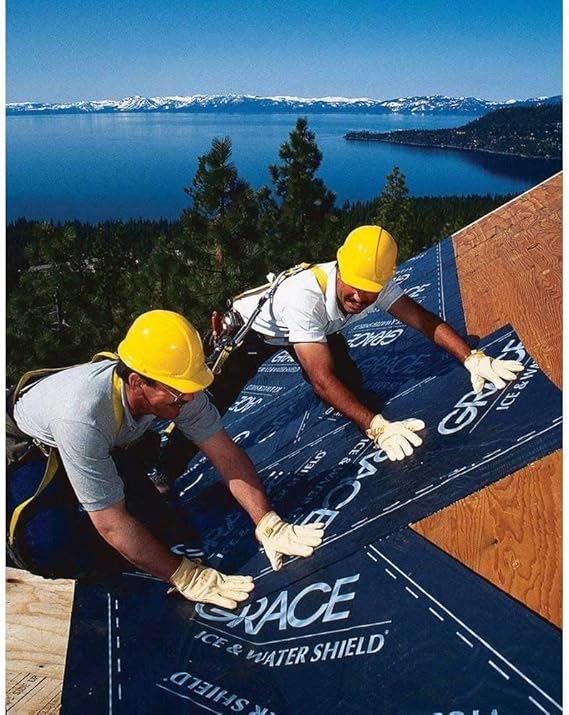
Image Credits: Amazon
The Grace Select Roofing Underlayment is an innovative solution that serves as a roof underlayment that assists in preventing damage to homes suffered from water after storms and heavy rain. That may be a little pricey but given the quality and ease of using it as a sealant, and its long-term protection it offers, then it’s well worth the price.
No matter if for a home or business property, it guarantees protection against water seepage, frozen roofs, and other extreme weather conditions.
Pros:
Cons:
3. DuPont Roof Protector Underlayment Roll 42" x 286'
- Lightweight for easy handling and installation with 90 day UV...
- Superior tear resistance compared to roofing felt for increased...
- Ideal for for sloped (>= 2:12) commercial and residential roofs...
I recommend DuPont Roof Protector because it is ideal for 2:12 pitched, commerical and residential roof and roofing application for metal cladding or shingles. This could easily endure the worst because of the much higher thermal stability which could stand a 90 days extreme UV test.
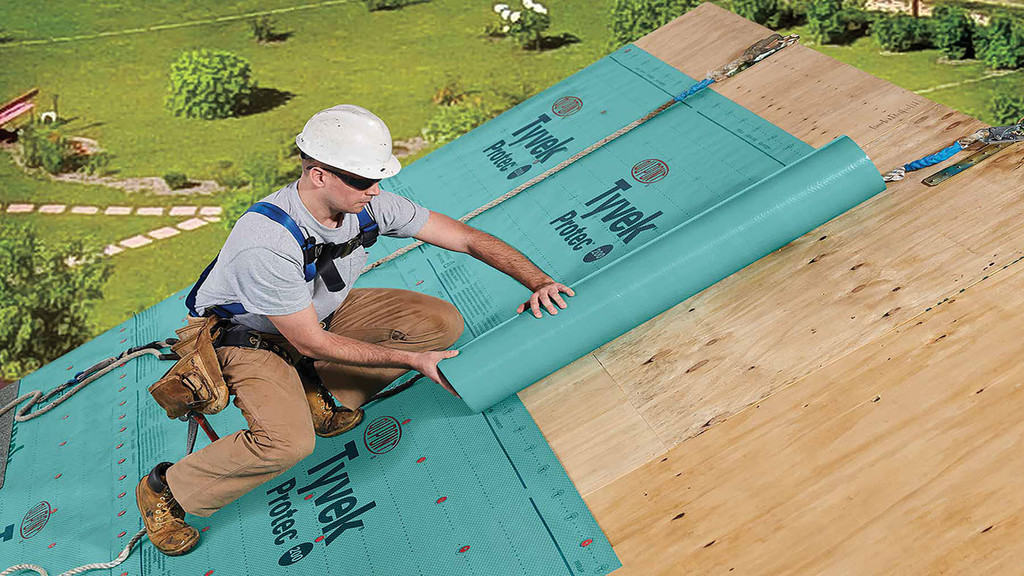
Image Credits: DIY Home Center
The DuPont Roof Protector comes in rolls with ten squares for easier laying and to ensure a large coverage is afforded the roof. This makes it easier to lay down compared to roofing felt. Further, there are more blended materials, leading to few junctions, closures or unions and in turn, makes it easier to reduce the exertion and usage of many man-hours and fewer wastes.
Pros:
Cons:
4. DuPont Tyvek Protec 120 Roof Underlayment 4' x 250'
- Compatible with roofs with asphalt shingles, cedar shingles and...
- Use for repair, re-roofing and new construction applications
- Trusted quality and durability from DuPont Tyvek
- The unique embossed pattern allows for better traction and grip...
Protec 120 is suitable to be applied under many kinds of roofing including shingles, cedar, or even metal building roof cladding for use by builders and homeowners alike. It is best for slopes 2:12 or higher. It has a slip resistant surface which fastens it on the roof; woven polypropylene which provides the membranes with rigidity and water barrier layer.
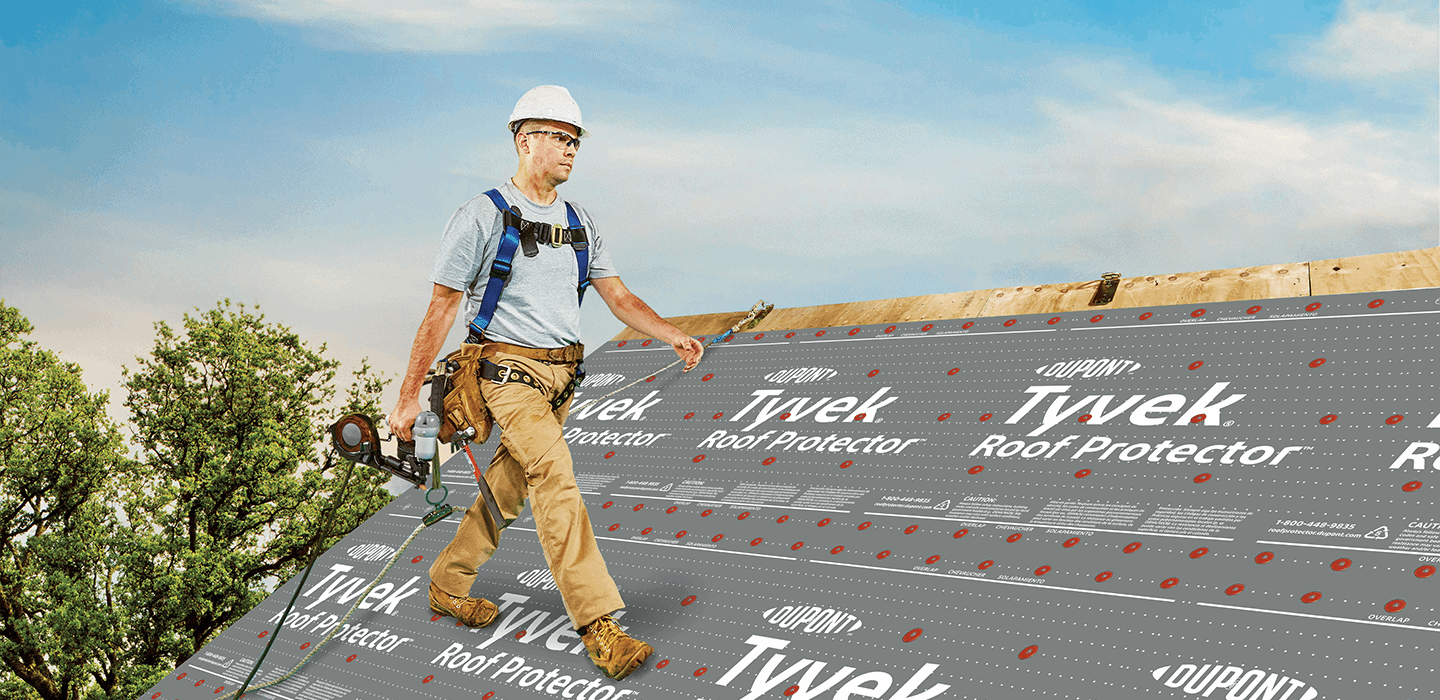
Image Credits: Scene7
The groove on the outer layer removes water and dirt enhancing a better environment for work the four layer design provides high performance. They are not wrinkled, are easy to fit and retain the ability to survive three months in the worst UV light exposure.
Pros:
Cons:
5. Tyvek Protec 160 Roof Underlayment 4' x 250'
- Compatible with roofs with asphalt shingles, cedar shingles,...
- Use for repair, re-roofing and new construction applications
- Preserves the roof deck during installation and provides an...
- Trusted quality and durability from DuPont Tyvek, backed by a 40...
- The unique embossed pattern allows for better traction and grip...
DuPont Tyvek Protec 160 is a high performance synthetic roofing underlayment with unparalleled anti-static properties. Popular for its reliability and consistently in production, it comes with a 40-year limited warranty. It is suitable with asphalt shingles, cedar, or metal roof cladding and is best for slopes 2:12 or higher.

Image Credits: YouTube
It is suitable for application in new construction, re-roofing and for maintenance purposes. It is easy to apply and become a moisture barrier that protects the middle part of the roof deck during the installation process. The embossed pattern makes the walking on the roof more safe and interlocking. Also, it is with the ability to withstand other conditions such as UV for a period of 6 months at most.
Pros:
Cons:
Pros:
Cons:
Importance of Roofing Underlayment
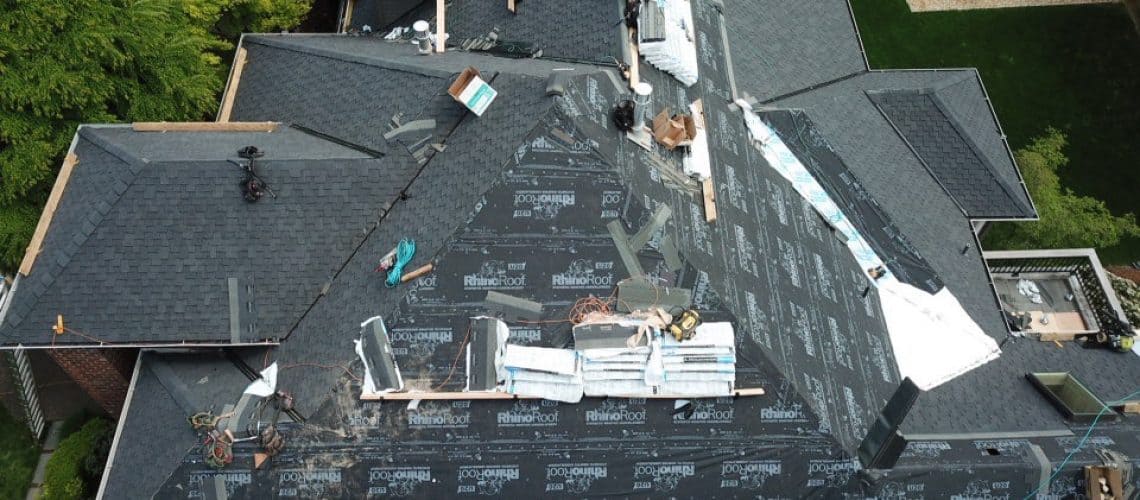
Image Credits: Portland Quality Roofing
1. Weather Protection
Your roof’s shingles act as a first layer of defense as they must withstand hurricane force winds, reflect UV rays and do not allow water to penetrate. But since these two components overlap, the high winds simply pull the shingles up and expose them to such effects as wind lift and water entry.
Suppose, for instance, a storm washes out your shingles. The underlayment shall minimize direct intrusion of snow, ice and rainfall into the roof deck to your house. Besides, the underlayment provides the necessary waterproofing until the shingles are installed or repaired.
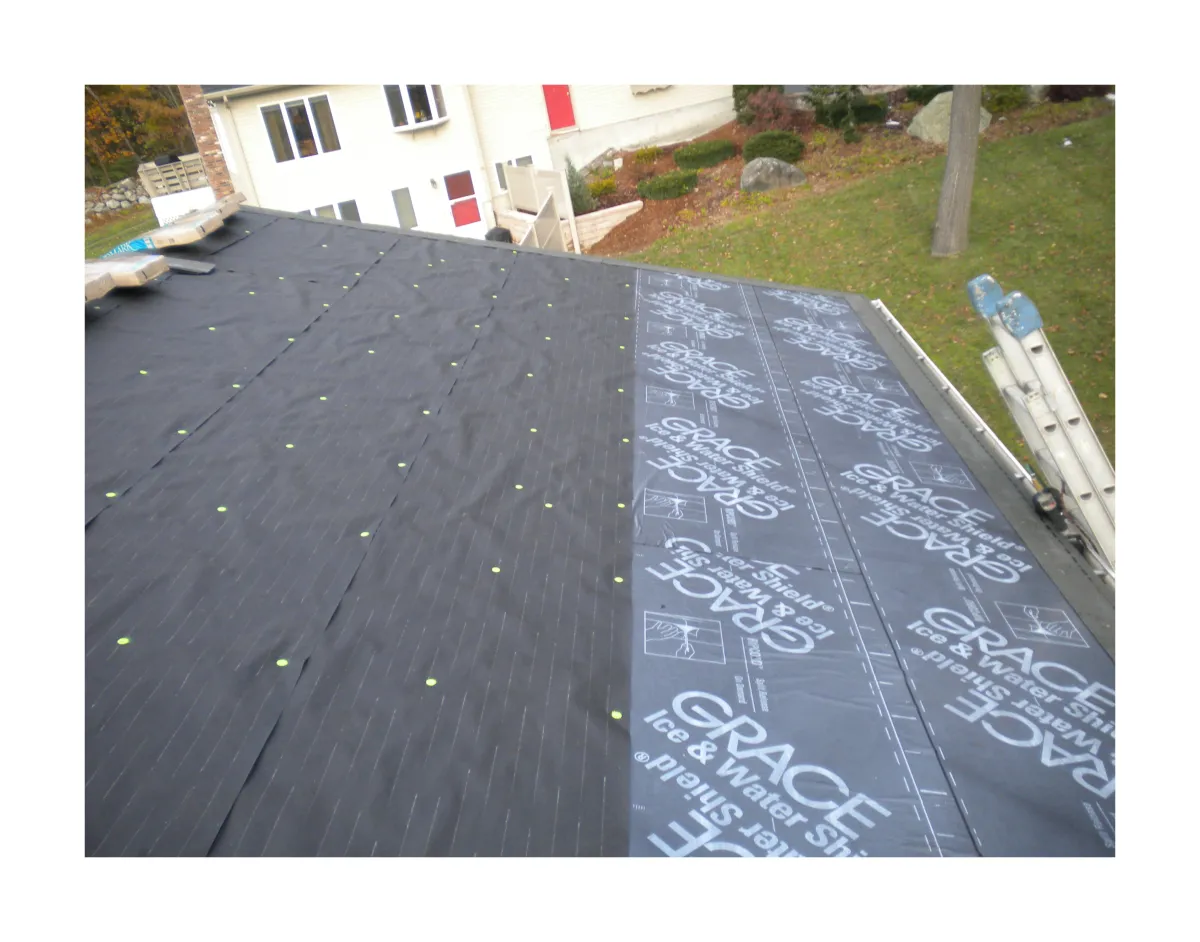
Image Credits: Construction Mentor
2. Protection from Ice and Water Damage
Your roof may also undergo some kind of stress due to blockages brought by ice or even snow. Where there are areas where the snow or ice has melted the water can penetrate into the building and then cause actual leaks, water damage and even molds. The water-resistant underlayment will provide for proper drain off the roof since it seals around the frame.
3. Fire Safety
The Class A fire rating cannot be met by shingles alone. However, it is possible of getting your roof to be a Class A fire rating if the roofing underlayment used also fulfills the building code, compatible with the shingles on the top and has attained certifications from building compliances.
How to Pick the Best Roof Underlayment
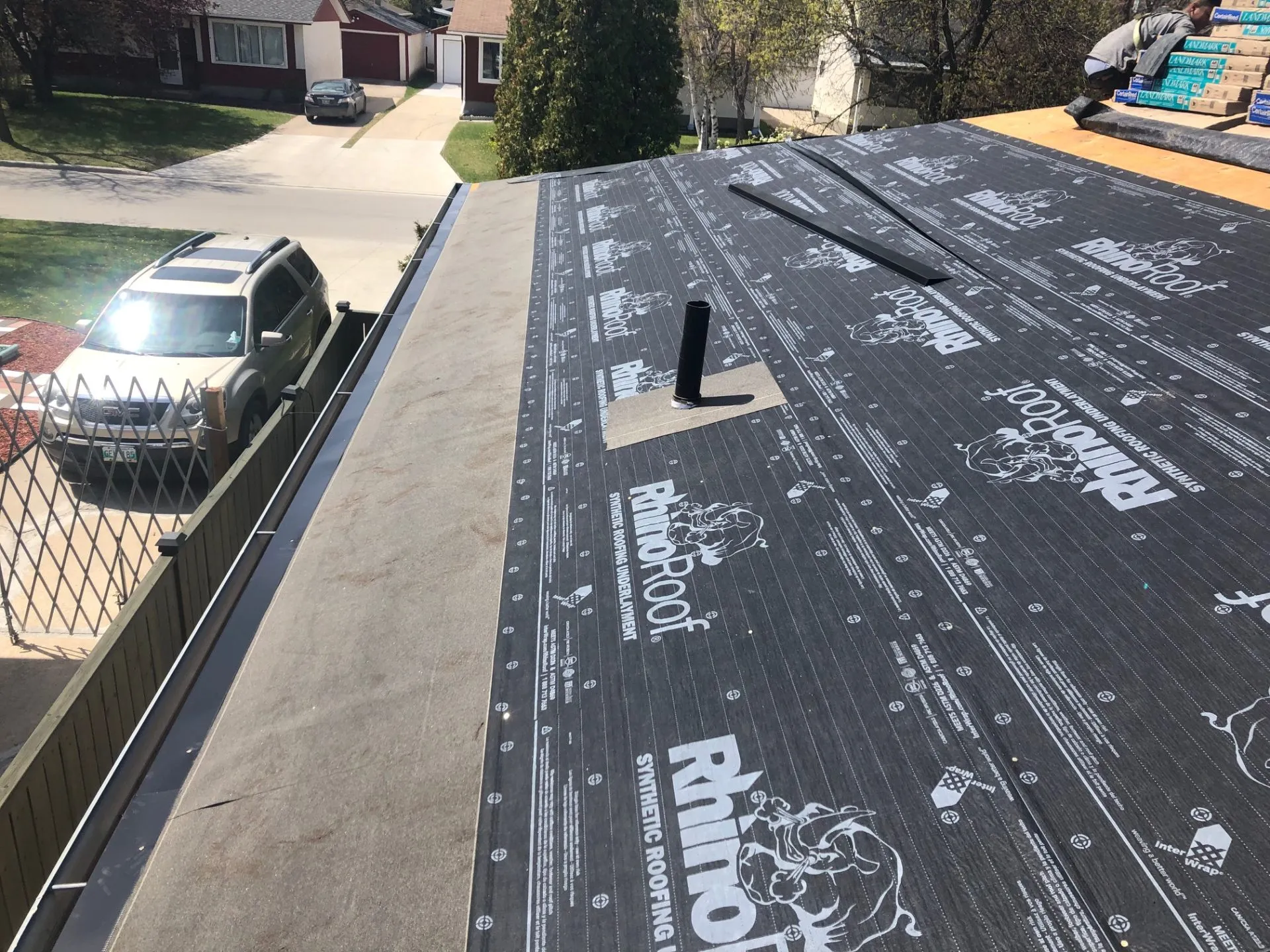
Image Credits: All Weather Exteriors
1. Local Weather Conditions
Depending on the weather, select the right underlayment variant to use when constructing a roofing system. For instance, if you live in a region with much humidity; then you will have to choose a waterproof type of product in order to avoid experiences with water leakage.
For example, if you live in a region with intense summer heat, you will have to buy an underlayment which is reflective of sunlight so that the temperatures inside your home are not high.
2. Compatibility
As mentioned, roof underlayment can be felt based, rubberized or synthetic based. There are usually organic felt underlayment materials but can also include some fiberglass reinforcing for added toughness.
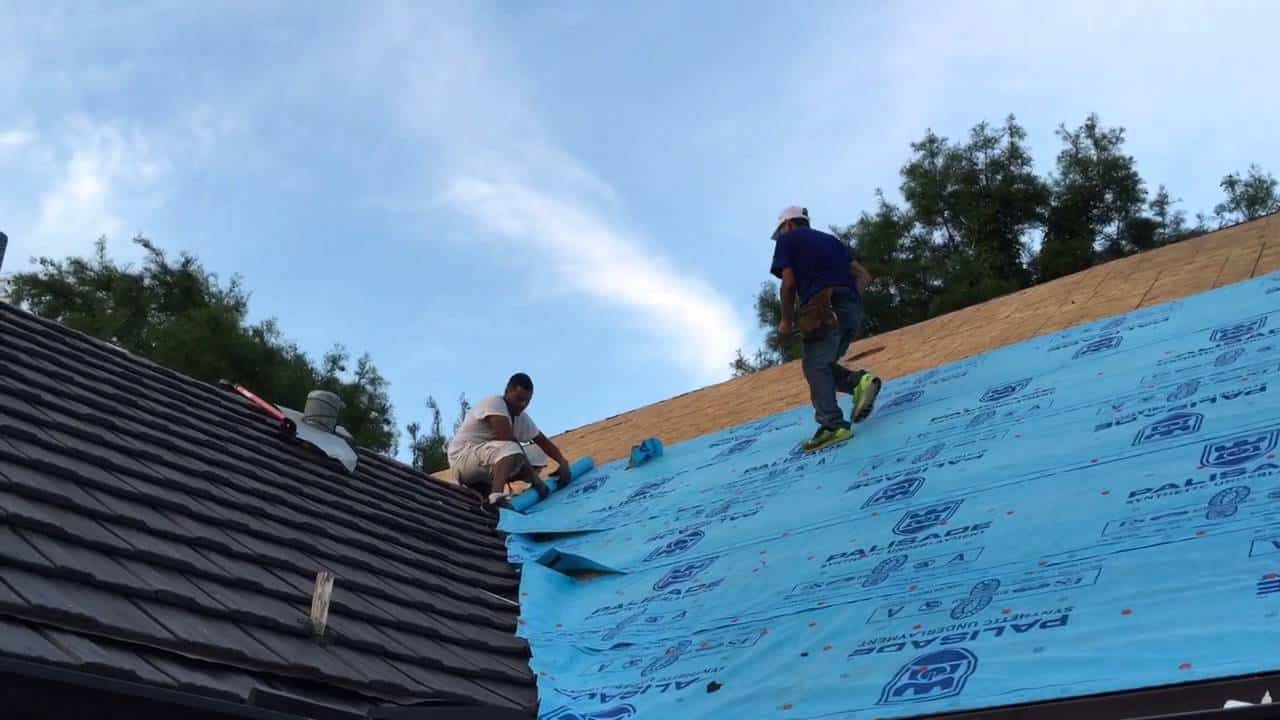
Image Credits: YouTube
Felt underlayment is particularly suitable in steep roofing because it can easily drain water off the roof. They also can not be said to be overly expensive, or even expensive at all for that matter. But it may degrade and loses its capability to regain the ability to absorb water after sometimes. It is not ideal if you’re planning to get maximum grade water resistance and durability.
Incorporated features of rubberized underlayment include elastic, flexible, and self-sealing. Therefore, it is suitable for application where high temperature prevails and shows excellent moisture penetration and weather resistance characteristics.
This is important because synthetic underlayment offered the best of both with higher insulation and waterproofing. Also the external layer is less dense and allows water vapor to evaporate out yet does not allow water to seep through. It provides longer duration protection against wind, rain and ice. While more costly, it is more long lasting and suitable for most forms of roofing materials.
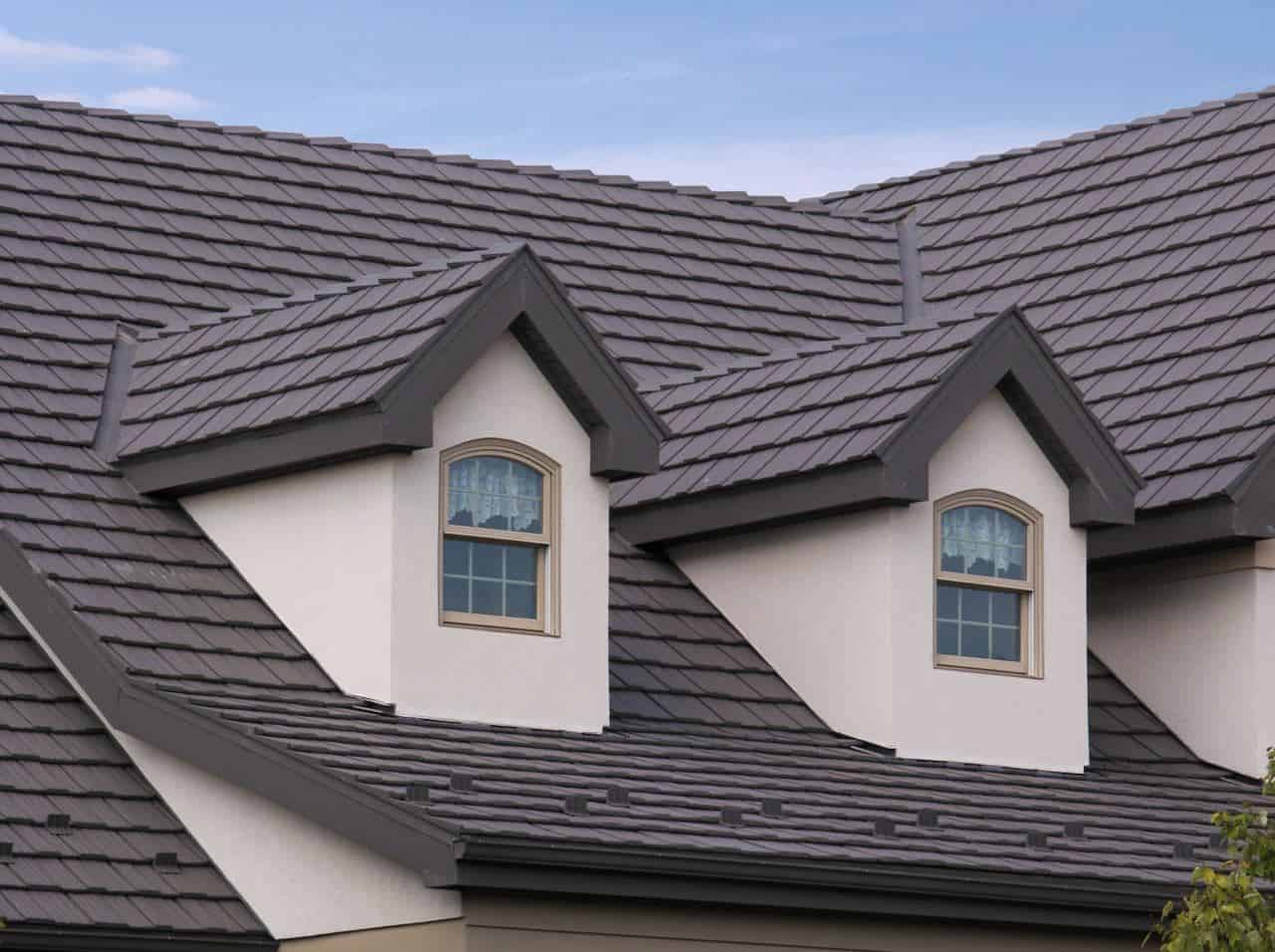
Image Credits: Cajun Home Improvements
3. Roofing Material
Ensure that in choosing underlayment, it will depend to the type of your roofing. For instance, it is possible to select felt underlayment for conventional roofing due to its low weight.
Synthetic underlayment can be used under a metal roof and in high temperatures because it insulates and frees heat surpluses. This is the place to go to get the best types of roofing material for commercial building.
4. Durability
Another important factor to consider concerning an underlayment is its sturdiness. In the process of verifying that the product will last look at the materials used in its production.
When it comes to buying a roof underlayment for asphalt shingles, quality is always important, but don’t let the price fool you. To find how tough exactly a particular type and make of a product has performed, you ought to read a customer feedback.
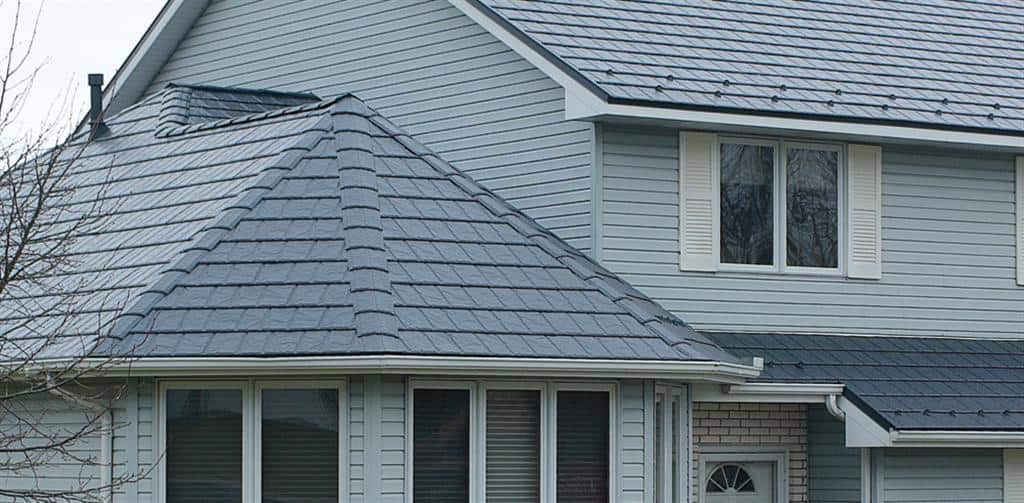
Image Credits: Paramount Roof
5. Cost
The cost of the roof underlayment depends on the quality of the underlayment, specific type of the underlayment, size and brand. Select the best roofing underlayment you need depending on the prices that you have set. Lastly, for price and quality, there is a strong negative relationship; whereby the lower the price the lower the quality.
6. Customer Feedback
Using testimonials is a great way to steer clear of disappointment while purchasing online;. Take into account opinion of other users who ordered the services before making a decision.
Frequently Asked Questions(FAQs)
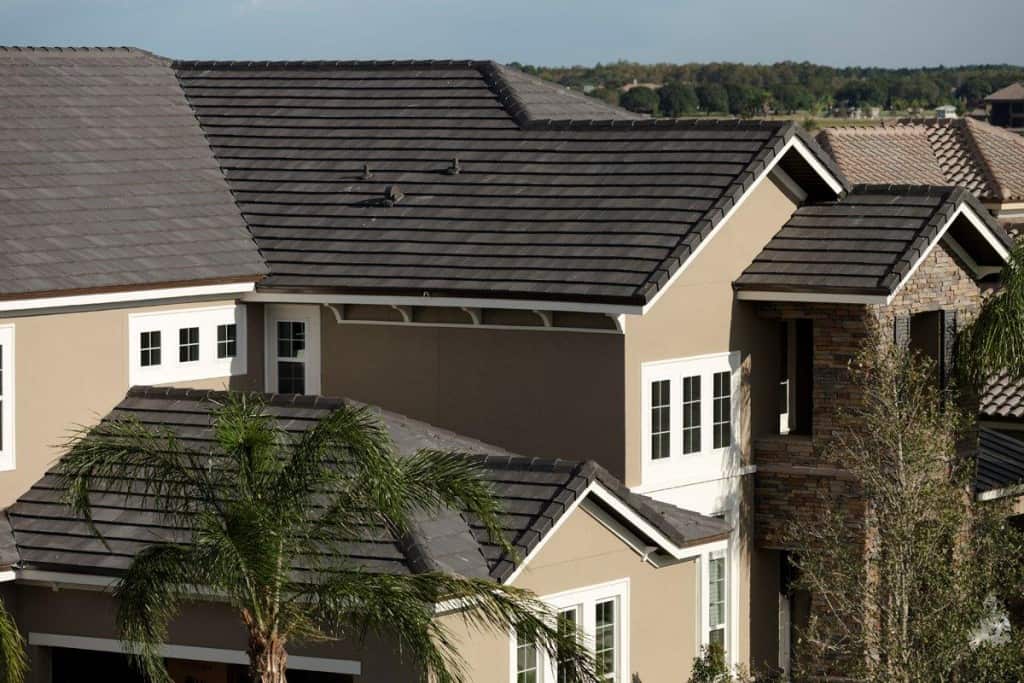
Image Credits: Eagle Roofing
1. How Much Underlayment Do Asphalt Shingles Need?
There is underlayment on every roof. Hence, there is a need to apply one or more of layers of underlayment in an asphalt shingle roof. Though, in order have a better protection to roofers, they may consider the necessary inclusion of multiple layers of underlayment particularly useful in low pitched roof designs.
2. Is Roof Underlayment Waterproof?
Most roofing underlayment are water proof and used as a water barrier prior to placing on the shingles. However, there are some underlayment products on the market today, which are not waterproof. Buy the product with certain characteristics if you want a waterproof roof underlayment for your project.
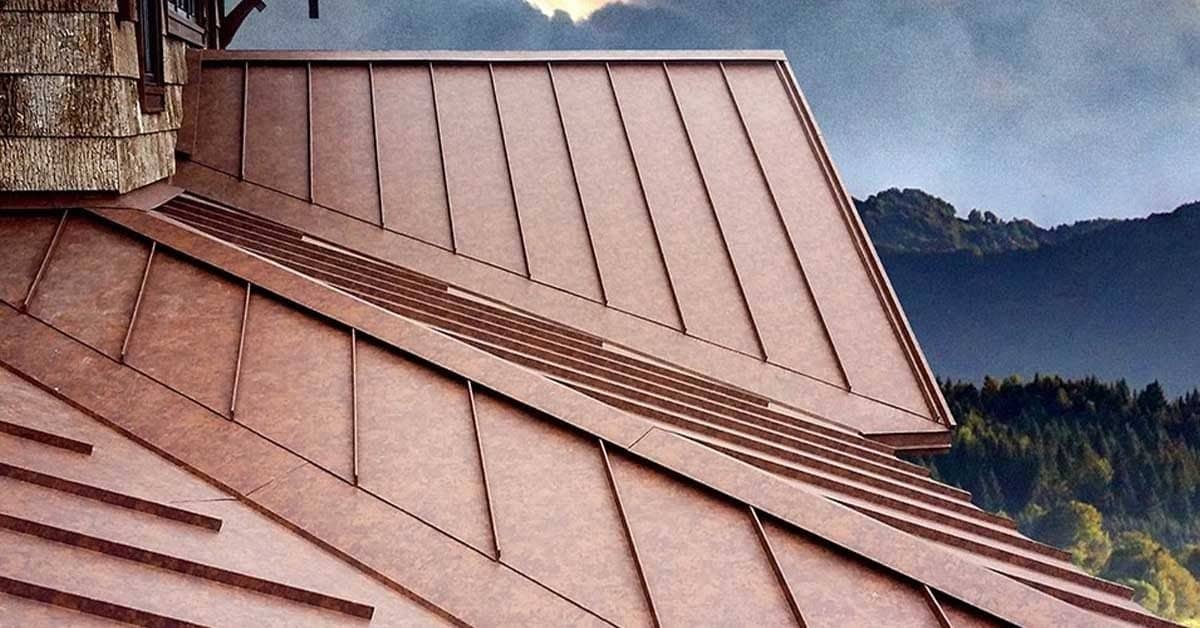
Image Credits: Western States Metal Roofing
3. How Should Underlayment be Applied to a Roof?
You will be able to install it on your own, or you can get professional installers to do it for you. But, the cost of the roof underlayment services could be something preventative for you. There are some manufacturers who provide installation instruction with the product they sell. You can also find such tutorials and instructions on the web.
Here is why you should hire a contractor to install your home's metal roof.
4. Which is Better: Felt or Synthetic Underlayment?
Synthetic roof underlayment has the advantage to felt but it is more expensive. House insulation is generally thin, vapor permeable, and water resistant while providing a barrier to the transfer of heat and moisture to the surface to keep your environment cool and dry.
5. How Long Can Roof Underlayment be Left Out in the Open?
The product's lifespan fluctuates because products come in with varying characteristics. For instance, the synthetic roof underlayment can be exposed any place for six to twelve months at a go; however, the time that the felt underlayment can be exposed is between three to six months.
Featured Image Credits: unugtp


















